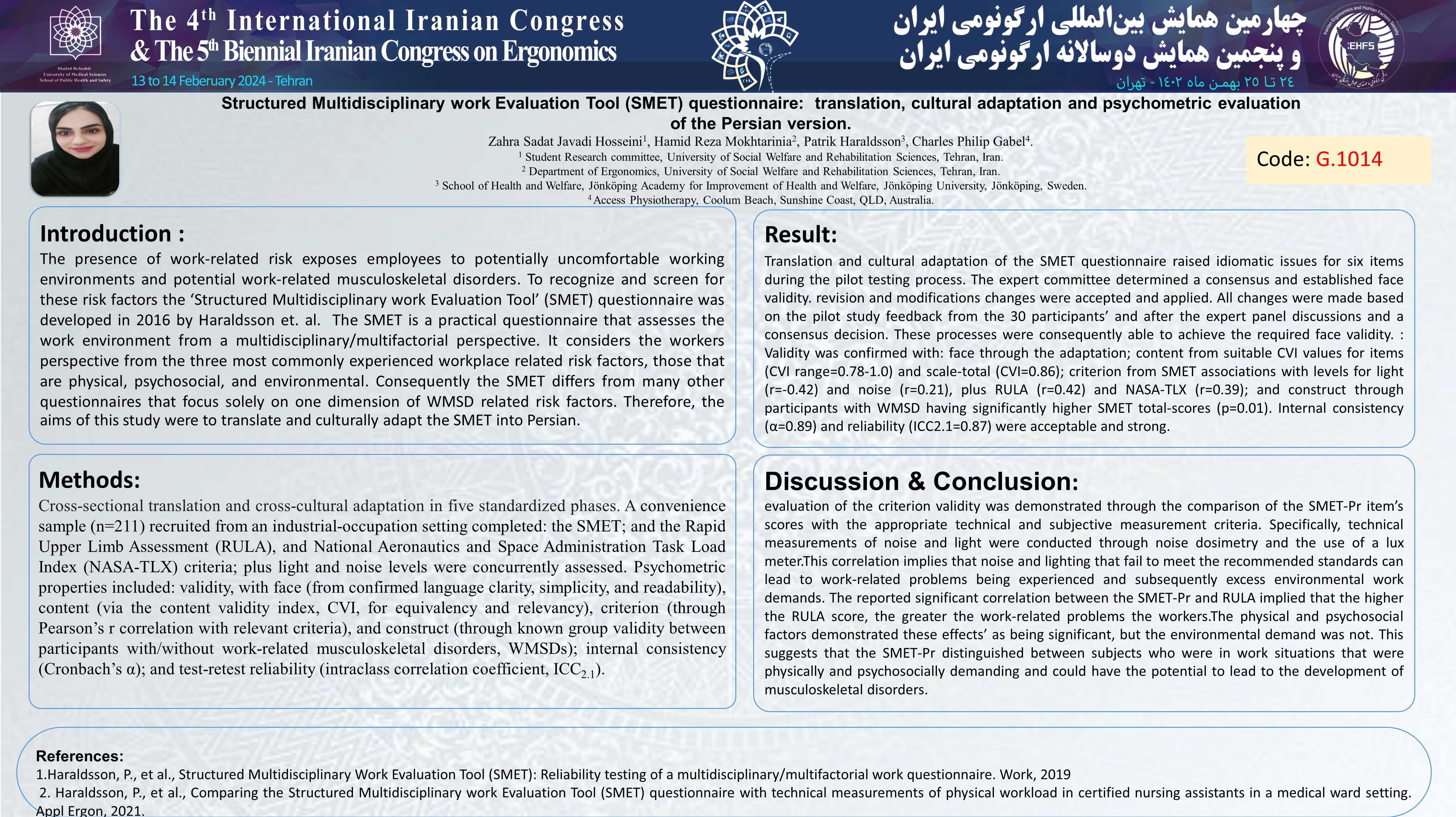Structured Multidisciplinary work Evaluation Tool (SMET) questionnaire: translation, cultural adaptation and psychometric evaluation of the Persian version.
کد: G-1014
نویسندگان: Hamid Reza Mokhtarinia © ℗, Zahra Sadat Javadi Hosseini, Patrik Haraldsson
زمان بندی: زمان بندی نشده!
دانلود: دانلود پوستر
خلاصه مقاله:
مقدمه
To assess relevant environmental conditions in any work-setting requires a multidisciplinary perspective that is practical, valid, and reliable. This includes the physical, environmental, and psychosocial risk-factors. The ‘Structured Multidisciplinary work Evaluation Tool’ (SMET) questionnaire simultaneously considers multiple work-related demands. This study translated and culturally adapted the SMET into Persian and evaluate its psychometric properties in Persian industrial workers.
مواد و روشها
Cross-sectional translation and cross-cultural adaptation in five standardized phases. A convenience sample (n=211) recruited from an industrial-occupation setting completed: the SMET; and the Rapid Upper Limb Assessment (RULA), and National Aeronautics and Space Administration Task Load Index (NASA-TLX) criteria; plus light and noise levels were concurrently assessed. Psychometric properties included: validity, with face (from confirmed language clarity, simplicity, and readability), content (via the content validity index, CVI, for equivalency and relevancy), criterion (through Pearson’s r correlation with relevant criteria), and construct (through known group validity between participants with/without work-related musculoskeletal disorders, WMSDs); internal consistency (Cronbach’s α); and test-retest reliability (intraclass correlation coefficient, ICC2.1).
یافتهها
Validity was confirmed with: face through the adaptation; content from suitable CVI values for items (CVI range=0.78-1.0) and scale-total (CVI=0.86); criterion from SMET associations with levels for light (r=-0.42) and noise (r=0.21), plus RULA (r=0.42) and NASA-TLX (r=0.39); and construct through participants with WMSD having significantly higher SMET total-scores (p=0.01). Internal consistency (α=0.89) and reliability (ICC2.1=0.87) were acceptable and strong.
نتیجهگیری
This study indicated the SMET Persian version had acceptable psychometric properties in an industrial occupational setting. Further investigation in longitudinal populations is recommended.
واژگان کلیدی
Psychosocial demand, physical demand, reproducibility, validation, health outcome.
دیدگاه ها (0)
ارسال یک دیدگاه
ارسال دیدگاه توسط مدیریت بسته شده است.
